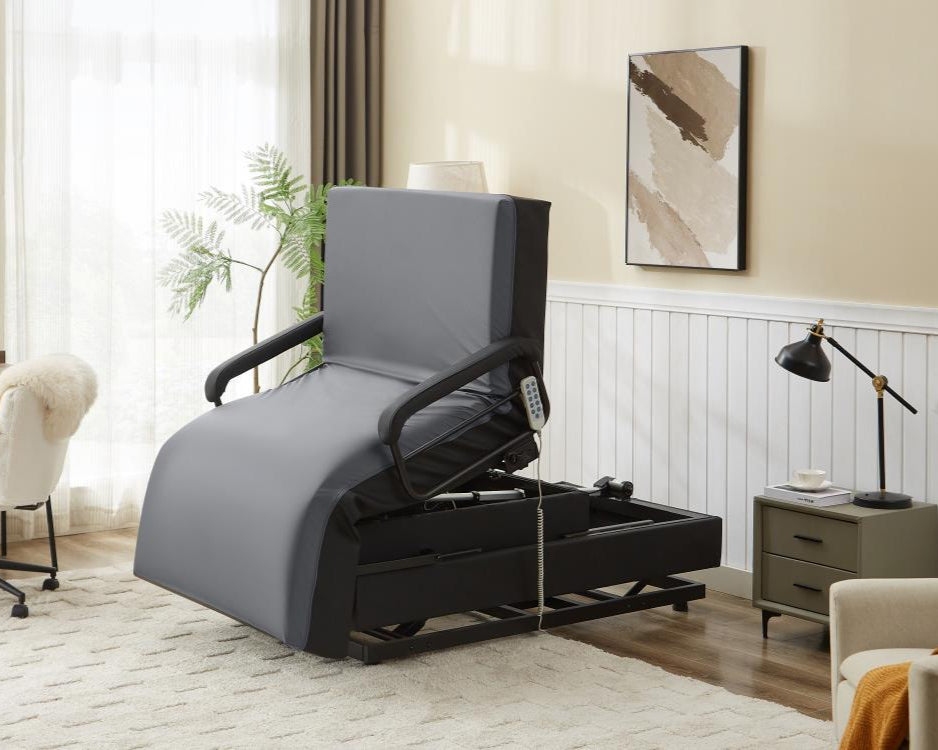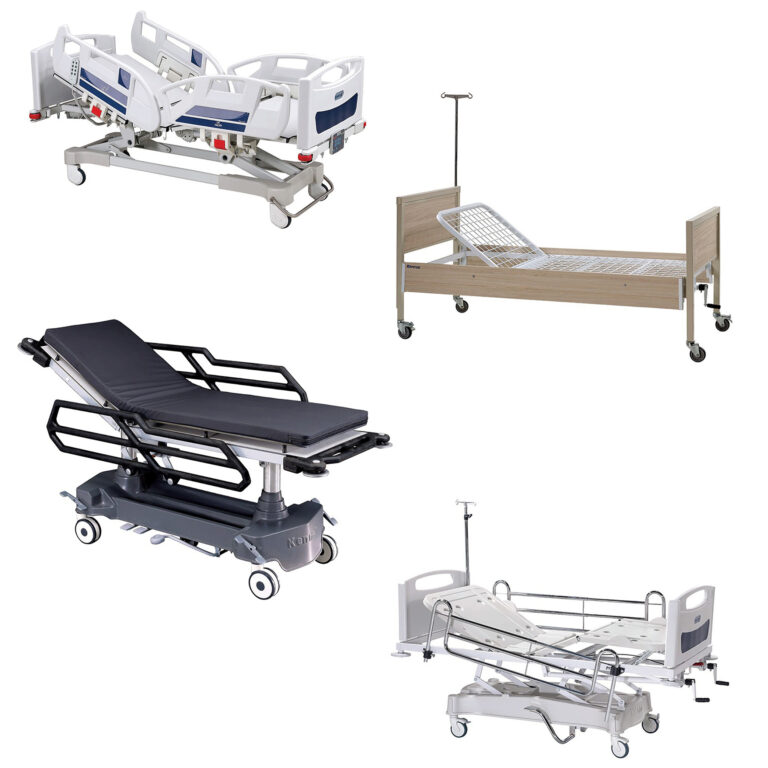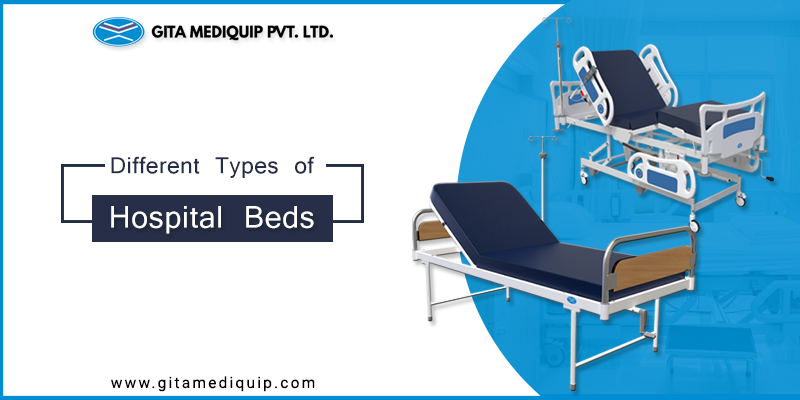Hospital Beds For Home Use Fundamentals Explained
Hospital Beds For Home Use Fundamentals Explained
Blog Article
Get This Report on Hospital Beds For Home Use
Table of ContentsHow Hospital Beds For Home Use can Save You Time, Stress, and Money.Unknown Facts About Hospital Beds For Home UseThe Ultimate Guide To Hospital Beds For Home UseThe Main Principles Of Hospital Beds For Home Use Hospital Beds For Home Use Things To Know Before You BuyGet This Report about Hospital Beds For Home UseAn Unbiased View of Hospital Beds For Home Use
There are 3 major types of health center beds: handbook, semi-electric, and fully-electric. These beds make use of hand cranks to adjust the bed's height and increase and decrease the head and the foot.
Semi-electric beds have an electric motor to elevate and decrease the head and foot sections of the bed (hospital beds for home use). Full-electric beds have an electrical motor that can elevate the head and foot areas of the bed as well as the whole elevation and positioning of the bed.
Rumored Buzz on Hospital Beds For Home Use
There are several kinds of health center beds, each developed to fulfill certain patient demands. Here are some usual types: This is the most usual type of health center bed, developed for basic medical usage.
Lower to the ground than a typical bed. This kind of bed is designed for larger people, with a larger structure and higher weight capability than a standard bed. This type of bed is made specifically for kids, with smaller sized sizes than a common bed. Special attributes such as full size side rails and animation design.
This kind of bed is designed for critically sick people that require open monitoring and specialized medical devices such as ventilators and mixture pumps. This kind of bed is made for usage during labor and distribution, with flexible placements and attributes to sustain the mommy and baby during the birth process.
The Single Strategy To Use For Hospital Beds For Home Use
Several function and the devices execute increasing grip to different parts of the vertebra and the extremities without relocating the body. These are just a few instances of the kinds of health center beds readily available. The certain type of bed used will certainly depend upon the client's condition, medical demands, and other factors.
Below is things you require to understand. A one-function healthcare facility bed is a medical bed that permits an individual to move just the head or foot section up or down. A 2 feature hospital bed commonly describes a kind of clinical bed that has two flexible functions to aid individuals in healthcare facilities or care centers.

The Ultimate Guide To Hospital Beds For Home Use
A 7-function ICU bed is a kind of clinical bed that site provides several adjustable features to sustain critically sick clients in a critical care unit (ICU) (hospital beds for home use). The seven functions commonly consist of: Back-rest adjustment: The back-rest can be gotten used to various angles to help the patient stay up or relax conveniently
Height adjustment: The bed can be raised or reduced to make it simpler for individuals to enter and out of bed, and for caretakers to offer care. Trendelenburg placement: The whole bed can be slanted to advertise blood circulation and flow in the body. Reverse Trendelenburg setting: The bed can likewise be tilted in the opposite direction to promote blood circulation and blood circulation in the top body.
1. What Dimension is a Health Center Bed? 2. Just how Much Does a Health Center Bed Expense? 3. Why Do Medical Facility Beds Have Side Rails? 4. What Are The Key Health Center Bed Components?. While more budget friendly than electrical designs, these beds require physical effort for changes. The primary benefits of hands-on beds are their cost and integrity, as they don't count on electricity. However, the demand for hands-on effort can be a constraint in circumstances where quick changes are needed or where caregivers encounter physical difficulties.
The Basic Principles Of Hospital Beds For Home Use
Semi-electric healthcare facility beds supply a balance of manual and electric controls. These beds provide an optimal center ground in between handbook and completely electric choices, providing simplicity of use without the full cost of electrical versions.
Semi-electric beds are fit for people that require moderate adjustments to the head and foot sections yet can take care of without constant elevation modifications. This makes them a cost-efficient remedy for those looking for comfort and benefit without the demand for consistent repositioning. Completely electric hospital beds include electric controls for seamless adjustments to the elevation, head, and foot sections.
Specialty health center beds, such as ICU beds, lasting care beds, and bariatric beds, are very carefully created to deal with specific clinical requirements. These beds offer customized take care of varied individual groups, boosting both results and convenience. In the complying with sections, we will certainly explore the major sorts of specialty health center beds, describing their specific advantages and applications.
With years of experience in manufacturing electrical linear actuators - hospital beds for home use and close cooperation with the healthcare sector, TiMOTION is well-positioned to offer reputable healthcare options. Our vertically incorporated company takes care of every step of the production process, from layout to actuator assembly, guaranteeing we supply phenomenal value and tailored solutions customized to your details requirements
The Buzz on Hospital Beds For Home Use

To find out more about integrating these technologies into your items, call us today. More reading:.
Information is sourced hop over to here from the Medicare Cost Report.

Hospital Beds For Home Use Fundamentals Explained
A healthcare facility bed is a bed made specifically for medical functions. It is not only an area for individuals to relax, however likewise a platform for clinical operations. Unlike common home beds, health center beds generally have adjustable features, which can promote clinical personnel to make various changes according to the requirements of patients, such as transforming the height, inclination, and assistance angle of the back and legs of the bed.
Report this page